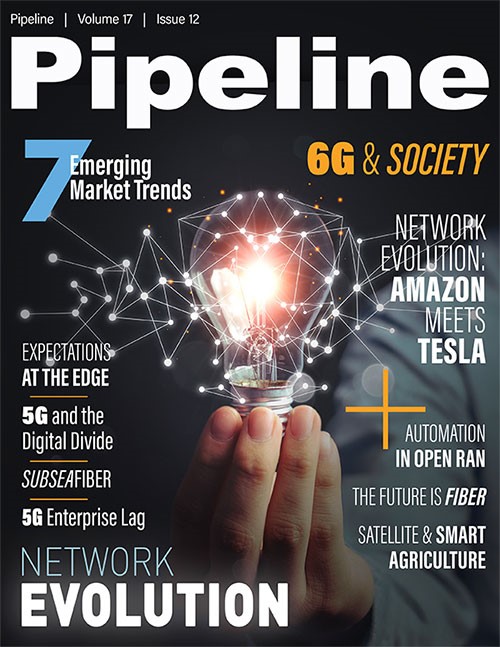Network evolution? Think Amazon meets Tesla!
By: Prayson Pate

We admire Amazon for its low costs and business efficiency, as well as its AWS cloud unit. Tesla is a leader in technology and performance. Both are very innovative and agile. What if we could bring all these concepts together to drive network evolution?
Why network evolution is important
Before we get to the how of network evolution, let’s look at the why.
Today, networks are under tremendous stress. The drivers are numerous and include the COVID-19 pandemic and lockdowns. Expanded use of videoconferencing. Working from home. The semiconductor crisis. The desire for faster service innovation. These have all contributed, and enterprises and operators have been trying to keep their heads above water responding to the changes.
The pandemic and the semiconductor crisis may be temporary situations. But increased videoconferencing, working from home, and rapid innovation are here to stay. Now it’s time to look forward, toward network evolution. Operators must plan for networks with higher bandwidth, better security, and lower latency. And they must design with innovation in mind. This means thinking differently about how they build these networks.
Amazon and Tesla are not known as telco suppliers, but they can still be useful models. They display the attributes that can help drive network evolution and provide a lesson for working in new ways.
Technology is great – but can you get it?
In the networking world we tend to focus on technical specifications—speeds and feeds, bandwidth, processor speed, and disk size. But the most important aspect of any product is availability. The best and fastest widget does you no good if you can’t get it.
Amazon has been a marvel at rapid delivery of orders and at suggesting alternatives when your choice is unavailable. But this focus on supply chain and availability hasn’t always been a driver in the telco world. Sure, we talked about second sources and continuity of supply—but an awful lot of the network was single-sourced, and much of the supply chain was fragile.
The pandemic and semiconductor crisis have highlighted the folly of this approach. We’re now seeing the essential nature of reliable supply chains and the imperative to change suppliers when they can’t meet demand.
Network operators are looking much more closely at the supply chains behind the products they buy. And they want the resilience of a diverse set of suppliers. They are insisting on standards and interoperability to support multi-vendor networks. Nobody wants a disruption of one supplier to stop their network evolution.
Technology is still important
Network innovation is about more than technology. But we still need technology innovation to support network innovation. And sometimes we must come at the problem in a completely different way.
Tesla is a great model for this. Electric cars have been around for as long as their gas-powered counterparts. And electric motors have incredible power and torque. This is



















